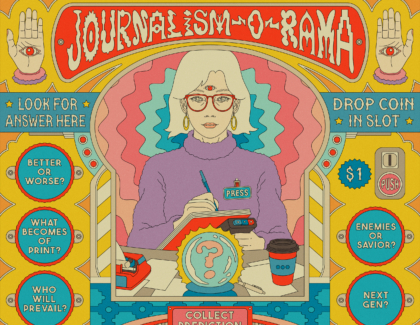Sign up for the daily CJR newsletter.
Last weekend I spoke at the BU Power of Narrative conference, where a lot of accomplished longform feature writers asked me about how they could get good at that ultimate shortform journalistic platform, Twitter.

Many of them were under the impression that, for journalists, there are more potential pitfalls than benefits to issuing 140-character missives. Somehow, prominent cautionary tales like that of The New York Times‘s Jodi Rudoren were more compelling to them than the dozens of journalists who have used Twitter to find great story ideas and build an audience for their work. I gently explained that there is nothing to be afraid of and everything to gain. Specifically, here’s what I suggested.
Think of it as a word game. You’re a writer. Presumably, you love words. Instead of viewing Twitter as a self-promotional chore, have fun with its limited space by getting better at using language economically. Also, in cases where you really hate the headline your editor put on a piece, this is your chance to rewrite it. Prove that you can do better.
But take it seriously. Remember that this is a public platform, and while you don’t need to make every tweet as serious and straightforward as an inverted-pyramid lede, you do need to keep it within the bounds of professionalism. When the writer Jennifer Weiner criticized one of the questions New York Times Magazine interviewer Andrew Goldman posed in a Q&A with Tippi Hedren, Goldman lashed out at her on Twitter, earning a rebuke from his bosses. Part of using Twitter as a professional platform is knowing when to step back. If it seems impossible to convey, in one tweet, the level of detail or nuance you feel a subject warrants, then you should probably write something longer, in a different space, and then tweet a link to it.
Pull back the curtain on your process. Think of the tone you adopt when you get home after work and tell your loved ones about what you wrote about that day. You might include a detail that got cut from the piece, or tell a little anecdote about a person you met who didn’t make it into the story, or share what you were feeling as you conducted an interview. All of this stuff–which is about your professional life but usually through a personal lens–makes great Twitter fodder. It’s also an excellent way to reveal tidbits of a story before it goes to press. Mac McClelland is one journalist who uses the medium to tease the long, reported pieces she’s working on, tweeting behind-the-scenes details. This doesn’t just get readers and other journalists invested in your work, it gets them interested in you, too. That’s a good thing.
Highlight the weirdest or funniest detail in your piece. Pick one quote or stat, and use that in a tweet about your article, rather than trying to summarize the entire piece or just copying and pasting the headline.
Pose questions, rhetorical or otherwise. If you’re anything like me, you frequently ask your colleagues for their advice and opinions, using them to find better sources and to gut-check your theses and assumptions. Twitter can be a way to cast a wider net. If you use it as a firehose through which you soak your followers with repeated links to your own work, you’re doing it wrong. Think of it instead as a way to create transparency between you, your colleagues, and your audience.
Tweet, and respond, selectively. Just because someone tweets at you doesn’t mean you have to respond to them. And just because you’re now a savvy Twitter user doesn’t mean you have to have it open all day on your screen, pinging and interrupting you with each new update. You can still check in selectively. In fact, you should only check in selectively. It’s the only way to stay sane.

Have fun. The Internet can smell your fear and/or disdain. If Twitter feels like a chore to you, we’ll all be able to tell.
Has America ever needed a media defender more than now? Help us by joining CJR today.






